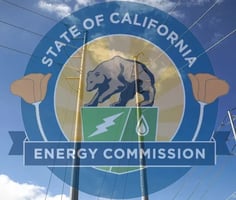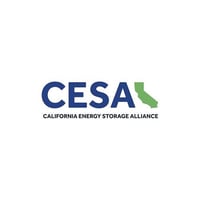July 15, 2021 By Sergio Dueñas and Lily Backer
California Needs up to 55 Gigawatts of Long Duration Energy Storage by 2045 to Meet Climate Targets and Maintain Reliable Electric Sector
New research finds California alone will need deploy 2-11 GW of long duration energy storage by 2030, and up to 55 GW by 2045
Berkeley, CA, December 8, 2020: By 2045, California will require the deployment of up to a staggering 55 gigawatts (GW) of long duration energy storage (LDES) to support its 100% clean electricity goals. This quantity represents over a 150X increase in the amount of energy storage deployed in the state since 2010 and is the energy equivalent of powering 37 million homes. By 2030, the state will require 2-11 GW of new operational long duration energy storage.
These findings are the result of a rigorous new modelling study released today by the California Energy Storage Alliance, demonstrating the urgent need for California to begin developing procurement and compensation models for long duration energy storage now to ensure that these resources can be deployed and online in the next 5-10 years.
The study, “Long Duration Energy Storage for California's Clean, Reliable Grid,” conducted by Strategen, modeled that California’s future grid will be heavily reliant on intermittent and variable solar generation. That dependance underscores the need for dependable, abundant, and long duration energy shifting resources that can provide more than four hours of power, currently the market standard in the state.
Alex Morris, Executive Director of CESA, states, “Nearly 180 GW of the 240 GW of incremental capacity installed in California by 2045 will be solar. Long duration energy storage of over four hours duration will be critical to support the solar grid at night, during every evening peak, and then of course on those hours, days, and even weeks when there just isn’t enough sun to meet demand.” Morris observes that the need for LDES will inevitably extend beyond the state of California. “Applying the methodology used in this study can help other solar-dominated Western states to intelligently plan for their future energy storage needs as well- this need for long duration storage is not limited to our state.”
California has begun to show leadership in recognizing the near-term need for LDES. In Spring 2020, the California Public Utility Commission called for 1 GW of new LDES capacity by 2026. In November 2020, a coalition of eight Community Choice Aggregators in California released the state’s first long duration energy storage request for offers (RFO) to procure up to 500 MW of long duration storage. The RFO seeks to have resources with a minimum discharge period of eight hours come online by 2026. However, the results of this study, along with recent summer blackout events, highlight the real urgency for more near-term long duration energy storage deployment to complement existing variable energy resources (VERs).
The LDES study assessed the need and opportunity for long duration energy storage (LDES) to enable California’s clean energy objectives through a technology-neutral approach that focused on the grid contribution of storage resources.
Key findings of the study include:
-
By 2045, 45-55 GW of long duration energy storage will be required to support California’s critical grid reliability needs; 2-11 GW of LDES will be required by 2030.
-
By 2045, long-duration energy storage can provide substantial benefits to California’s grid relative to a case where California does not have access to long-duration energy storage. These benefits include:
-
Enabling the retirement of 10 GW of fossil fueled generation
-
Reducing system capacity costs by $1.5 billion per year from 2031-2045
-
Increasing renewable energy utilization by 17%
-
Reducing in-state use of fossil fuels for electricity generation by 25%
-
-
Given development and procurement timelines, the timing and magnitude of resource deployment implies need for immediate action. The amount of LDES deployment identified in the base case of the study is over 150 times (15,000% increase) the amount of energy storage deployed in the state over the previous decade, 2010-2020.
To access the full report, visit www.storagealliance.org/longduration.
About CESA
The California Energy Storage Alliance (CESA) is the definitive voice of energy storage in California. At 100+ members strong, CESA is committed to advancing the role of energy storage in the electric power sector. CESA is a 501c(6) membership-based advocacy group whose mission is to make energy storage a mainstream resource to advance a more affordable, efficient, reliable, safe and sustainable electric power system for all Californians. CESA is technology and business model-neutral and is supported solely by the contributions and coordinated activities of its members. Visit www.storagealliance.org.
About Strategen
Strategen is a mission-driven professional services firm that specializes in market development for decarbonized energy systems. Strategen works across the energy ecosystem with public sector leaders, global technology corporations, utilities, NGOs and project developers to help them transform the energy future through policy and regulatory innovation, stakeholder engagement, and a focus on bankable business models. Visit www.strategen.com.
Media Contact:
Melanie Davidson
Director of Marketing
California Energy Storage Alliance
mdavidson@storagealliance.org



